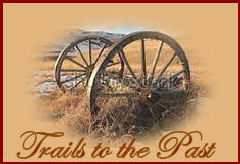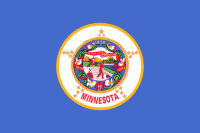|
Progressive Men
Index
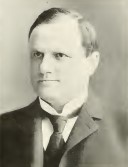 JAMES ALFRED KELLOGG has been engaged in the
practice of law in Minneapolis since October, 1887. Mr.
Kellogg is a native of Ohio, having been born December
12, 1849, in New London, Huron County. His father, Hiram
Tyre Kellogg, and his mother, Emiline Fiske (Kellogg),
were people of moderate circumstances, and engaged in
farming. H. T. Kellogg was a soldier in the War of 1812
on the American side. He was a native
of Sheffield Township, Berkshire County, Massachusetts,
where his father and grandfather were born. His father
was a soldier in the Revolutionary War on the American
side.
Emiline Fiske Kellogg was a native of Hoc Pen
Ridge, Connecticut. JAMES ALFRED KELLOGG has been engaged in the
practice of law in Minneapolis since October, 1887. Mr.
Kellogg is a native of Ohio, having been born December
12, 1849, in New London, Huron County. His father, Hiram
Tyre Kellogg, and his mother, Emiline Fiske (Kellogg),
were people of moderate circumstances, and engaged in
farming. H. T. Kellogg was a soldier in the War of 1812
on the American side. He was a native
of Sheffield Township, Berkshire County, Massachusetts,
where his father and grandfather were born. His father
was a soldier in the Revolutionary War on the American
side.
Emiline Fiske Kellogg was a native of Hoc Pen
Ridge, Connecticut.
James Alfred Kellogg’s education began in the
district schools of Hillsdale, Michigan, and was
continued through the high school. Afterwards he entered
Hillsdale College, but did not graduate. He was a
classmate of Will M. Carleton, the poet, and a member of
the Alpha Kappa Phi society. He read law while teaching
school, and engaged in farming at Ottawa, Illinois,
improving such opportunity as his business afforded,
often arising as early as three o’clock in the morning
to pursue his studies, and reading during the noon
intermission in school or farm work, and at every other
opportunity which presented itself. He was admitted to
the bar at Berrien Springs, Michigan, September, 1872,
and commenced practice at Niles, Michigan.
In October, 1887, he came to Minneapolis and
commenced the practice of law, in which he has been
engaged ever since. When the war broke out Mr. Kellogg
was only eleven years old, but he was old enough to take
a deep interest in that great conflict, and on February
29, 1864, he enlisted in Company G, Forty-fourth Indiana
Veteran Volunteer Infantry, and remained in the service
until September 10, 1865, having served in the Army of
the Cumberland, and as a soldier, and not simply as a
drummer boy. He was fourteen years, two months and
seventeen days old when he enlisted, and lacked three
months of being sixteen years of age when he was
mustered out, and yet he had never failed to do his
share of the soldier’s duties. Mr. Kellogg is a member
of Rawlins Post, G. A. R., and was colonel and
aide-de-camp on the staff of Gov. R. A. Alger, of
Michigan, which was made up of veterans, each of whom
bore scars received in battle. He is a Republican and
was appointed circuit court commissioner of Berrien
County, Michigan, in 1874. To this office he was elected
twice. He declined a third nomination. He was elected
justice of the peace of the city of Niles, Michigan, in
1876, but resigned one year later. He was elected
prosecuting attorney of Berrien County in 1880 and again
in 1882. In
1887 he was tendered a nomination for circuit judge in
the Second District of Michigan, but declined.
Mr. Kellogg was married May 29, 1870, to Frances
Virginia Ball, of Ottawa, Illinois. They had three
children, of whom the youngest only, Frances Lavinia, is
still living. His wife died in 1877, and in December,
1879, he was married again, to Alice Cooper, at Corunna,
Michigan, they had two sons, one of whom, Alfred Cooper,
is still living. Subsequently he was divorced and
married Jennie L. Heath, of Plattsburg, New York, who
has one son living, James Alfred, Jr., and one daughter,
Jennie Louise, dead. Mr. Kellogg has been very successful in the practice
of his profession, and has attained a high reputation as
a lawyer, and as a man. It is doubtful if any person in
the state of Minnesota was ever able to present a better
indorsement from more responsible people than that which
Mr. Kellogg was able to furnish to the Minneapolis, St.
Paul & Sault Ste. Marie Railroad in applying for a
position in the legal department of that
company.
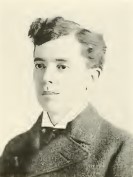 THOMAS ERVIN KEPNER The ancestry of T. E.
Kepner is of good old New England stock. On his father’s
side the family came from Pennsylvania, and on his
mother’s side from New York. He was born October 29,
1867, in Olmstead County, Minnesota, the son of G. W.
Kepner, a farmer in that county, and Cynthia Hallenbeck
(Kepner). THOMAS ERVIN KEPNER The ancestry of T. E.
Kepner is of good old New England stock. On his father’s
side the family came from Pennsylvania, and on his
mother’s side from New York. He was born October 29,
1867, in Olmstead County, Minnesota, the son of G. W.
Kepner, a farmer in that county, and Cynthia Hallenbeck
(Kepner).
Thomas received his early education in the common
schools, later taking a course in the Rochester
(Minnesota) Academy, from which he graduated in 1886.
After his graduation he worked for four years as cashier
and bookkeeper with the firm of Leet & Knowlton,
dealers in wholesale and retail dry goods, at Rochester.
During this time, however, in his leisure hours, he read
law under the direction of H. A. Eckholdt.
After leaving Leet & Knowlton he worked for a
time in the office of Mr. Eckholdt, but came to
Minneapolis in 1892, entering the law department of the
University of Minnesota. He graduated from that
department in the class of ‘94, and immediately engaged
in the practice of his profession in Minneapolis. For
the short period of practice since then, Mr. Kepner has
been highly successful. He has made a
specialty of insurance law and is local attorney for a
number of insurance companies. He has also contributed
somewhat to law publications, and is at present engaged
by the West Publishing Company to write a text book on
insurance law for their Hornbook Series. Mr. Kepner is a
Republican in politics. He is a member
of the Knights of Pythias, and in college was a member
of the Phi Delta Phi. He is a member
of Hennepin Avenue M. E.
church.
 JOHN HENRY KERRICK, is a dealer in
machinery in Minneapolis, the head of the firm of
Kerrick & Frost. He was born in Gilletts, Bradford
County, Pennsylvania, August 16, 1842, the son of John
D. Kerrick, now deceased, and Margaret M. Decker
(Kerrick). The only educational advantages he enjoyed in
youth were those of the common schools. Mr. Kerrick
entered the employ of A. T. Nichols & Co., of
Williamsport, Pennsylvania, as a bookkeeper in their
machine works. This was his first business
engagement.
Subsequently he traveled for them as salesman for
several years, and. finally, located a branch house for
this firm at Indianapolis, which did the largest
business of any establishment in that line in the state.
He sold his interest in the Indianapolis establishment
in 1880 and came to Minnesota, locating at Minneapolis,
where he engaged in the same line of business,
outfitting sawmills, planing mills, sash and door
factories, machine shops, etc. His business increased
very rapidly, and for several years he did the largest
machinery business then carried on west of Chicago,
amounting to over half a million dollars in the course
of twelve months. The hard times of 1884 caused
embarrassment, which was subsequently recovered from and
the business reestablished under the firm name already
given, and is now conducted with success. JOHN HENRY KERRICK, is a dealer in
machinery in Minneapolis, the head of the firm of
Kerrick & Frost. He was born in Gilletts, Bradford
County, Pennsylvania, August 16, 1842, the son of John
D. Kerrick, now deceased, and Margaret M. Decker
(Kerrick). The only educational advantages he enjoyed in
youth were those of the common schools. Mr. Kerrick
entered the employ of A. T. Nichols & Co., of
Williamsport, Pennsylvania, as a bookkeeper in their
machine works. This was his first business
engagement.
Subsequently he traveled for them as salesman for
several years, and. finally, located a branch house for
this firm at Indianapolis, which did the largest
business of any establishment in that line in the state.
He sold his interest in the Indianapolis establishment
in 1880 and came to Minnesota, locating at Minneapolis,
where he engaged in the same line of business,
outfitting sawmills, planing mills, sash and door
factories, machine shops, etc. His business increased
very rapidly, and for several years he did the largest
machinery business then carried on west of Chicago,
amounting to over half a million dollars in the course
of twelve months. The hard times of 1884 caused
embarrassment, which was subsequently recovered from and
the business reestablished under the firm name already
given, and is now conducted with success.
Mr. Kerrick has an honorable record as a soldier.
He enlisted in the army in the One Hundred and
Seventy-ninth New York Volunteers as a private and
participated in the battles of Cold Harbor Spottsylvania
Court House, White House Landing, Petersburg, and was at
the surrender of Lee at Appomattox. At the battle of
Petersburg the flag fell from the hands of the color
sergeant, who was shot in seven places, and Mr. Kerrick
seized it and carried it from Petersburg to the close of
the war and back to Elmira, New York. He is a member
of Morgan Post, No. 4, G. A. R. He has always
been a loyal supporter of the candidates and principles
of the Republican party. He is a member of the Fowler
M. E. Church, a new
society organized in 1894 by Bishop Fowler. Mr. Kerrick
was married April 11, 1876, to Mrs. Virginia A. Smith.
They have no children.
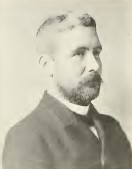 STANLEY RICE KITCHEL is a member of the
Minneapolis bar, where he has been practicing law since
1879. Mr. Kitchel is of English descent and traces his
ancestry to a very early period in the settlement of
this country. The first member of the family to come to
America was Robert Kitchel, who came with his wife,
Margaret, as one of a company of Pilgrim refugees who
sailed from England, April 26, 1639. in the first vessel
that anchored in the harbor of what is now known as New
Haven, Connecticut. This colony
settled in Guilford, Connecticut. where Robert
Kitchel became a leader in the community and acquired a
considerable estate. In 1666 Robert
Kitchel and his family moved to Newark, New Jersey. His
descendants became numerous in that vicinity and many
families now living there and bearing the name of
Kitchel trace their ancestry direct to his first member
of the family in America and although different branches
of the family are to be found in different parts of the
country they are more numerous in New Jersey than
anywhere else. Among the descendants of Robert Kitchel
was Harvey D.
Kitchel, D. D., a Congregational minister, who
began preaching in Detroit, Michigan, in 1848, and
remained there until 1864. In 1864 he went to Chicago,
where he had charge of a large church and where he
remained until 1866 when he was elected president of
Middlebury College, in Vermont. He held this position
until 1873, when he resigned. Since that time he has not
been engaged actively in any professional work. He died September 11,
1895. His wife’s maiden name was Ann Sheldon, whose
family resided at Rupert, Vermont. STANLEY RICE KITCHEL is a member of the
Minneapolis bar, where he has been practicing law since
1879. Mr. Kitchel is of English descent and traces his
ancestry to a very early period in the settlement of
this country. The first member of the family to come to
America was Robert Kitchel, who came with his wife,
Margaret, as one of a company of Pilgrim refugees who
sailed from England, April 26, 1639. in the first vessel
that anchored in the harbor of what is now known as New
Haven, Connecticut. This colony
settled in Guilford, Connecticut. where Robert
Kitchel became a leader in the community and acquired a
considerable estate. In 1666 Robert
Kitchel and his family moved to Newark, New Jersey. His
descendants became numerous in that vicinity and many
families now living there and bearing the name of
Kitchel trace their ancestry direct to his first member
of the family in America and although different branches
of the family are to be found in different parts of the
country they are more numerous in New Jersey than
anywhere else. Among the descendants of Robert Kitchel
was Harvey D.
Kitchel, D. D., a Congregational minister, who
began preaching in Detroit, Michigan, in 1848, and
remained there until 1864. In 1864 he went to Chicago,
where he had charge of a large church and where he
remained until 1866 when he was elected president of
Middlebury College, in Vermont. He held this position
until 1873, when he resigned. Since that time he has not
been engaged actively in any professional work. He died September 11,
1895. His wife’s maiden name was Ann Sheldon, whose
family resided at Rupert, Vermont.
Among the children of Harvey D. and Ann Sheldon
Kitchel is Stanley Rice Kitchel, born at Detroit,
Michigan, July 4, 1855. Stanley Kitchel
was more fortunate than most boys in his parentage. His
father was a man of bright cheerful, happy disposition,
in thorough sympathy with his children, and in a larger
degree than usual, was the companion and intimate friend
of his sons. To the advantages of the public schools of
Detroit and Chicago were added for him the helpful
counsel and guidance of his father, who without
repressing the spirits of his sons, instilled in them
the habits of study and industry. Stanley fitted for
college at Middlebury, Vermont high school and entered
Middlebury College in 1872 remaining there two years. In
1874 he went to Williams College, where he graduated in
1876. While in college he was a member of the Chi Psi
fraternity and maintained a high rank as a student.
He had determined to be a lawyer, and on April 1,
1877, arrived in Minneapolis in search of the larger and
better opportunities believed to exist for a young
lawyer in the rapidly developing west. In June the
following year he was admitted to the bar of Hennepin
County, and has been engaged in active practice ever
since. He began without partners in business and
continued in that way until 1880. In that year he became
a member of the firm of Rea, Woolley & Kitchel,
which partnership continued until 1883. From 1883 to
1886 the firm was Rea, Kitchel & Shaw and from 1886
to date it has been Kitchel, Cohen & Shaw. Mr.
Kitchel is a Republican in politics and takes an active
interest in public affairs although he has never asked
for any political preferment for himself.
His church connection is with the Plymouth
Congregational Church. He was president of the Minneapolis Bar
Association, 1894-97; president of the Minneapolis Club,
1895-97, and a member of the following Masonic bodies:
Khurum Lodge, St. John’s Chapter, Minneapolis Council,
Minneapolis Mounted Commandery and the Scottish Rite. He
was married December 2, 1879, to Anna C. Gerhard, of
Delaware, Ohio. They have one child, Willam Cray
Kitchel, born March 20,
1881.
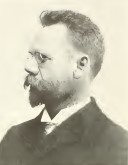 ROBERT KOEHLER is director of the Minneapolis
School of Fine Arts. Mr. Koehler is a native of Hamburg,
Germany, where he was born November 28, 1850. His
father, Theodore Alexander Ernest Koehler, was a
mechanic of especial skill. He was a native of Berlin,
received his early education at Pottsdam, and, after
having learned his trade, entered upon his
“wanderjahre,” as was then the custom in Germany, his
wanderings leading him into various parts of Europe,
including St. Petersburg, Copenhagen. etc. His wife,
Charlotte Christine Louise Bueter, daughter of Nicolaus
Basilius Bueter, a master builder of Hamburg, was a lady
of artistic tastes and attainments and a teacher of
artistic needlework to many of the ladies of
Hamburg. In
1854 Ernest Koehler came to America with his family and
settled in Milwaukee. He desired that his children
should have better educational advantages than he had
enjoyed, and, not satisfied with the public schools of
Milwaukee, sent them to a private school where Robert
received his early education. Besides English, German,
French, Latin and Greek were taught, and much attention
given to other special studies, including chemistry,
literature, drawing, etc. ROBERT KOEHLER is director of the Minneapolis
School of Fine Arts. Mr. Koehler is a native of Hamburg,
Germany, where he was born November 28, 1850. His
father, Theodore Alexander Ernest Koehler, was a
mechanic of especial skill. He was a native of Berlin,
received his early education at Pottsdam, and, after
having learned his trade, entered upon his
“wanderjahre,” as was then the custom in Germany, his
wanderings leading him into various parts of Europe,
including St. Petersburg, Copenhagen. etc. His wife,
Charlotte Christine Louise Bueter, daughter of Nicolaus
Basilius Bueter, a master builder of Hamburg, was a lady
of artistic tastes and attainments and a teacher of
artistic needlework to many of the ladies of
Hamburg. In
1854 Ernest Koehler came to America with his family and
settled in Milwaukee. He desired that his children
should have better educational advantages than he had
enjoyed, and, not satisfied with the public schools of
Milwaukee, sent them to a private school where Robert
received his early education. Besides English, German,
French, Latin and Greek were taught, and much attention
given to other special studies, including chemistry,
literature, drawing, etc.
In drawing, Robert, the subject of this sketch,
easily excelled, and when it came to the choice of a
profession his tastes led him to that of
lithographer.
In due time he became apprenticed to a
lithographing firm. But the work of a commercial
engraver did not satisfy his ambition. He desired to
devote himself seriously to the art of drawing, for
which purpose he decided to go to Europe and enter an
academy of art there. It was necessary for him to rely
upon his own resources, and, encouraged by his private
teacher of drawing, H. Roese, he began preparing
himself, devoting his leisure time to fresco painting,
when suddenly his teacher died. His only hope now rested
upon his skill as an engraver. In 1871 he accepted a
position in this capacity in Pittsburg. During this time
difficulty with his eyes necessitated an operation in
New York. He secured employment in a small engraving
establishment, sharing his fortunes with a former fellow
apprentice, and worked hard with the hope of better
things. In the course of a year and a half he had saved
sufficient money to carry out his long cherished scheme
of going to Europe for the purpose of studying. Though
at first refused admission to the Royal Academy at
Munich, because the time for admitting students had
expired, the superiority of his work submitted secured
his acceptance, and he became a student of the antique
class, advancing to the portrait class the first term.
Having exhausted his resources at the end of two years,
he was compelled to return to America. He had
determined, however, upon the career of an artist, and
refused a brilliant offer from a lithographic
establishment for commercial work. He went to New York,
where the Art Students’ League had been organized, and
after having hard work maintaining himself through four
years of constant toil and study, he was quite
unexpectedly provided by George Ehret with the means for
continuing his studies in Europe, he returned and
continued his studies there for nearly four years. He
again returned to America on a visit, authorized at the
same time by the Munich Artists Association, to enlist
the co-operation of American artists for the grand
international art exhibition to be held in 1883 which
proved very successful. In 1887 he was again sent to
America in the same capacity, but not being able to
remain here long enough to attend in the work
personally, he left it in the hands of a committee of
leading artists of New York, who allowed it to fail.
Nothing daunted, Mr. Koehler proceeded to organize an
exhibition of the work of Americans studying in Europe,
and for his energy and labor was awarded the cross of
the Order of St.
Michael by the Prince Regent of Bavaria. About
this time Mr. Koehler took charge of a private art
school in Munich and was also engaged with his own brush
upon work which was exhibited at the Munich
International Exhibition and at other European and
American cities. At the Paris Universal Exhibition in
1889 he received honorable mention, and the year
following he exhibited at the Paris salon, Champ de
Mars. Among
other purchasers of his pictures were Mr. George I.
Secney and the Temple Collection at the Pennsylvania
Academy of Fine Arts.
December, 1892, he returned to America, but had
hardly got fairly located at the Van Dyke Studio, in New
York, when he was offered the directorship of the
Minneapolis School of Fine Arts. He was married since
his return to America to Miss Marie Fischer, of
Rochester, New York. Though mainly occupied with
teaching, Mr. Koehler has found true since coming to
Minneapolis to produce several pictures and portraits,
to appear upon the lecture platform on numerous
occasions, and to contribute to the American and German
periodicals on art topics. He is a member of the Munich
Art Association and the Munich Etching Club, and
president of the Studio Club in Minneapolis and of the
Minneapolis Art League, recently formed. He also had the
position of president of the American Artists’ Club, of
Munich, four times, and served as a member of the jury
at the International Art Exhibition at Munich, in
1883.
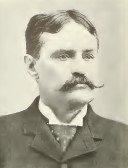 MARTIN B.
KOON, is a lawyer practicing his profession in
Minneapolis. His ancestry on his father’s side is
Scotch, and on his mother’s side Connecticut Yankee. His
father, Alanson Koon, was a farmer in moderate
circumstances, in Schuyler County, New York, a man of
sterling Christian character. His mother’s maiden name
was Marilla Wells, and Mr. Koon always speaks of her in
terms of deep affection and the most profound reverence
for her memory. She was a woman of strong character, and
deeply impressed herself upon her children. The most
valuable legacy which his parents bequeathed to him was
habits of industry, indomitable perseverance, never
failing energy and a mind naturally active and studious. MARTIN B.
KOON, is a lawyer practicing his profession in
Minneapolis. His ancestry on his father’s side is
Scotch, and on his mother’s side Connecticut Yankee. His
father, Alanson Koon, was a farmer in moderate
circumstances, in Schuyler County, New York, a man of
sterling Christian character. His mother’s maiden name
was Marilla Wells, and Mr. Koon always speaks of her in
terms of deep affection and the most profound reverence
for her memory. She was a woman of strong character, and
deeply impressed herself upon her children. The most
valuable legacy which his parents bequeathed to him was
habits of industry, indomitable perseverance, never
failing energy and a mind naturally active and studious.
Martin B. was born January 22, 1841,
at Altay, Schuyler County, New York. While he was yet a
lad his father removed with his family to Hillsdale
County, Michigan, where the subject of this sketch grew
up on a farm. He recalls that the first money he ever
earned was for riding a horse for a neighbor while
plowing corn. Mr. Koon attended the winter schools, as
most farmer boys did in those days, and worked on the
farm in the summer. He prosecuted his
studies, however, with such diligence that, at the age
of seventeen, he was prepared to enter Hillsdale
College. During his college course he supplemented his
limited resources by teaching school several terms, but
kept up his studies and completed his course in 1863. He
had, however, labored so hard as a student as to
seriously impair his health, and in 1864 a change of
climate became necessary, and he made a trip to
California by way of the Isthmus. The change was
beneficial, and after remaining two years in California,
engaged in teaching, he returned to Michigan to take up
the study of law in the office of his brother, E. L.
Koon. In 1867 he was admitted to the bar in Hillsdale,
Michigan, and soon afterward entered into partnership
with his brother, which association continued until
1878.
While he did not go actively into
politics, he was elected to the office of prosecuting
attorney in Hillsdale County in 1870 to 1874.
In 1873 he spent four months in travel in
Europe. He had become
persuaded, however, that Hillsdale did not offer a
sufficient field for the exercise of his talent, and in
1878 he removed to Minneapolis, where he formed a
partnership with E. A. Merrill, to which firm A. M.
Keith was afterward admitted. This firm enjoyed an
extensive and profitable business until the fall of
1881, when, owing largely to overwork, Mr. Koon fell a
victim to typhoid fever, and on his partial recovery he
went to California in search of health.
In
1883, after his return. Judge J. M.
Shaw resigned from the district bench, and Gov.
Hubbard appointed Mr. Koon to fill the vacancy.
This was entirely without Mr. Koon’s solicitation
and wholly unexpected. He accepted the office with much
reluctance, doubting his qualifications for the
position. He filled it with such eminent satisfaction,
however, that in the following fall he was unanimously
elected to the same office for the term of seven years.
But he did not find the duties of the office congenial
to him, and May I, 1886, he resigned. His resignation
was received with general and profound regret. His
administration of the office had been marked by singular
ability, and his retirement from the bench was regarded
as a misfortune by the whole community. During his
occupancy of that position he tried a number of
important cases, among them the Washburn will case, the
St. Anthony water power case, the King-Remington case,
the Cantieny murder case, and others scarcely less
important. This work involved an enormous amount of
study and research, which he most conscientiously
performed. On his retirement from the bench he resumed
the practice of his profession, and is now the senior
member of the firm of Koon, Whelan & Bennett. The
practice of the firm is mainly in the line of
corporation law. They are attorneys for the Minneapolis
Street Railway Company, the “Soo” Railway Company, the
Pillsbury-Washburn Company, the G. W. Van Dusen Company,
the Washburn-Crosby Company, the Northwestern National
Bank, Gillette-Herzog Company, the Millers’ and
Manufacturers’ Insurance Company, the London Guarantee
and Accident Company, and others.
Judge Koon is a member of the
Minneapolis Club, the Commercial Club, the Chamber of
Commerce and a trustee of the Church of the Redeemer. He
was married November, 1873, to Josephine Vandermark and
has two daughters, Catherine Estelle and M.
Louise.
The information
on Trails to the Past © Copyright
may be used in personal family history research, with
source citation. The pages in entirety may not be
duplicated for publication in any fashion without the
permission of the owner. Commercial use of any material
on this site is not permitted. Please respect the
wishes of those who have contributed their time and
efforts to make this free site possible.~Thank
you! | | | |
